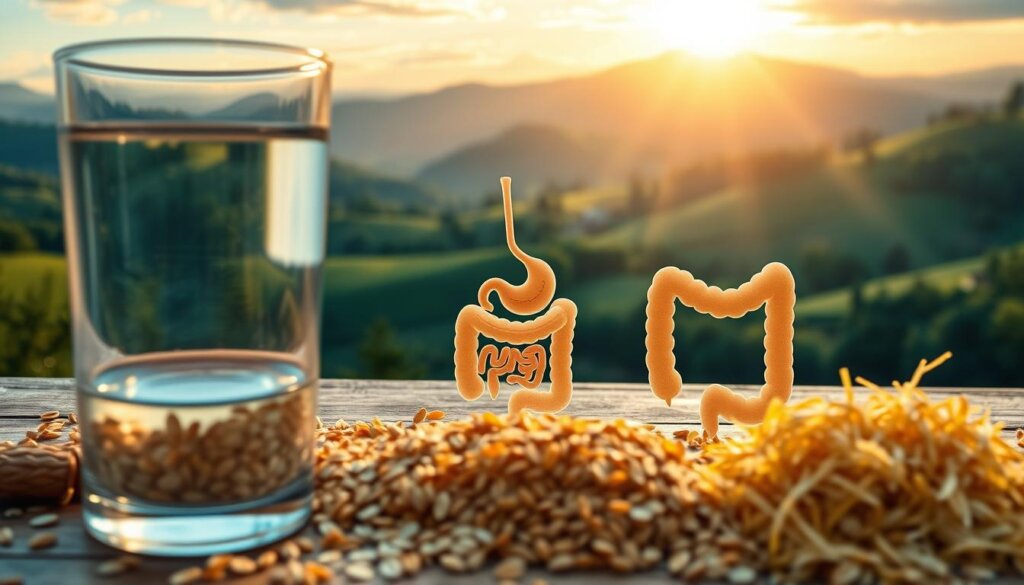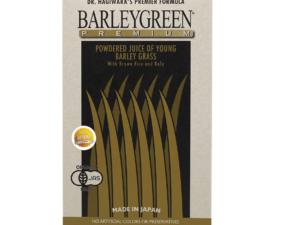Did you know only 5% of Americans meet their daily fiber needs? This alarming statistic highlights a major gap in modern diets, especially for those managing blood sugar levels. Proper nutrition plays a vital role in diabetes care, and fiber is a key player.
The Wellness Group, experts in diabetes nutrition, emphasizes the power of fiber-rich foods. Soluble fiber slows sugar absorption, while insoluble fiber supports digestion. Both types contribute to stable glucose levels and heart health.
For personalized guidance, contact Wellness Group via WhatsApp at +60123822655. Their team is available Monday to Friday (9:30 AM–6:30 PM) and Saturday (10 AM–5 PM). This guide explores the best fiber sources and simple meal strategies for lasting wellness.
Key Takeaways
- Fiber stabilizes blood sugar and reduces diabetes complications.
- Most people consume far less fiber than recommended.
- Soluble and insoluble fibers offer unique health benefits.
- Wellness Group provides expert consultations via WhatsApp.
- Small dietary changes can significantly improve metabolic health.
Understanding How Fiber Helps Diabetes
The secret to steady glucose levels lies in a simple dietary component: soluble fiber. When consumed, it forms a gel-like substance in the gut, slowing carbohydrate absorption. This mechanism prevents sudden spikes in blood sugar, making meals safer for those with type diabetes.
The Science Behind Blood Sugar Control

Click to 了解更多
Research highlights fiber’s fermentation process in the gut. Beneficial bacteria break it down into short-chain fatty acids (SCFAs), like butyrate. These compounds enhance insulin sensitivity and reduce inflammation—key factors for metabolic health.
“A study by Chandalia et al. found that 50g of daily dietary fiber improved insulin response and cholesterol in type 2 diabetes patients.”
Why Experts Call Fiber a Superfood
- Immediate benefits: Slows digestion, flattening post-meal glucose curves.
- Long-term gains: Lowers HbA1c (per ADA research) and supports heart health.
- Gut synergy: SCFAs strengthen the body’s natural defenses against insulin resistance.
The American Diabetes Association recommends 14g of fiber per 1,000 calories. For many, doubling current intake could mean fewer medications and better glucose levels.
Key Benefits of Fiber for Diabetes Management
Nutritional science reveals a simple way to support diabetes care. Including more fiber-rich foods offers multiple advantages, from stabilizing glucose to improving heart health. These benefits make it a cornerstone of a balanced diet.

Stabilizing Glucose Levels After Meals
Fiber slows digestion, reducing post-meal sugar spikes by 20-30%. A 6-month study showed a 0.5% drop in HbA1c with high-fiber meals. This effect is crucial for long-term blood sugar control.
Supporting Heart Health and Cholesterol
Soluble fiber binds to bile acids, lowering LDL cholesterol by 5-10%. Research links higher intake to reduced cardiovascular risk. For a natural daily detox for blood sugar, explore Wellness Group’s guidance.
Aiding Weight Management
High-fiber foods increase satiety hormones like leptin. Studies show 2-3kg annual weight loss with consistent intake. They’re also less calorie-dense than processed options.
| High-Fiber Foods | Processed Foods |
|---|---|
| Black beans (5.4g fiber per ¾ cup) | White bread (1g fiber per slice) |
| Passion fruit (6.5g fiber per ½ cup) | Instant noodles (0.5g fiber per serving) |
“Fiber’s dual role in glucose and cholesterol management makes it indispensable for metabolic health.”
Soluble vs Insoluble Fiber: What's the Difference?
Not all fibers work the same way—understanding their differences unlocks better blood sugar control. One dissolves in water, while the other stays intact. Both are essential for a balanced diet.
The Power of Soluble Fiber
Soluble fiber forms a gel when mixed with water. This slows digestion, preventing rapid glucose spikes. Oats, apples, and beans are rich sources.
Its viscosity traps sugars and fats, easing their absorption. Research shows it feeds gut bacteria, boosting insulin sensitivity.
Insoluble Fiber: Nature’s Broom
Insoluble fiber adds bulk to stools, speeding up waste removal. Think of it as an “intestinal broom.” Kale, nuts, and lentils pack this type.
It prevents constipation and supports a healthy gut lining. Unlike soluble fiber, it doesn’t dissolve but works mechanically.
| Soluble Fiber | Insoluble Fiber |
|---|---|
| Dissolves in water (gel-like) | Doesn’t dissolve (adds bulk) |
| Slows sugar absorption | Speeds digestion |
| Found in oats, berries | Found in whole grains, veggies |
“Combining both fibers maximizes digestion and glucose control—like a tag team for your gut.”
- Cook smart: Keep potato skins on; steam veggies lightly to preserve fiber.
- Start slow: Increase intake gradually to avoid bloating.
- Hydrate: Drink water to help fibers move smoothly.
Top Fiber-Rich Foods for Blood Sugar Control
Smart food choices play a crucial role in stabilizing glucose. Packing meals with the right ingredients can enhance digestion and slow sugar absorption. Here’s a curated list of foods high in fiber that support metabolic health.

Best Whole Grains for Steady Energy
Whole grains like quinoa and barley offer slow-release carbs. Their low glycemic index prevents spikes. Compare these options:
- Quinoa: 5g fiber per cup, complete protein source.
- Barley: 6g fiber per cup, reduces post-meal glucose by 30%.
For a local twist, try organic barley grass powder in smoothies—linked here.
Fruits and Vegetables Packed with Fiber

Click to 了解更多
These vegetables and fruits deliver maximum content per bite:
- Passion fruit: 6.5g fiber per serving, tropical and tart.
- Broccoli: 5g per cup, contains sulforaphane for insulin sensitivity.
“Steaming preserves 20% more fiber than boiling—keep veggies crisp.”
Powerful Legumes and Seeds
Seeds and legumes are tiny but mighty. Chia offers 5g fiber per tablespoon. Pair with these snacks:
- Roasted chickpeas (7g fiber per ½ cup).
- Winged beans (Malaysian superfood, 4g per serving).
Soak legumes overnight to cut cooking time and boost digestibility.
| Snack Idea | Fiber Per Serving |
|---|---|
| Kale chips | 2.5g |
| Almonds (¼ cup) | 3.5g |
How Much Fiber Do You Need Daily?
Daily fiber targets vary by age and gender—are you meeting yours? The American Diabetes Association recommends 31 grams for men (31–50 years) and 25 grams for women. These benchmarks support stable glucose and heart health.
Tailoring Fiber to Your Caloric Needs
A simple formula personalizes goals: divide your calorie intake by 1,000, then multiply by 14. For a 1,500-calorie diet, that’s 21 grams daily. This rule adapts to activity levels and metabolic needs.
Local vs. Global Fiber Sources
Malaysian staples like winged beans (4g/serving) rival quinoa’s 5g/cup. Balance traditional and imported options for variety:
| Local (Malaysia) | Western |
|---|---|
| Winged beans | Oats |
| Banana blossoms | Almonds |
“Space high-fiber meals 2 hours apart from metformin to avoid absorption issues.”
- Sample 1,500-calorie day: Oats (5g) + pear (5.6g) + lentils (7g) = 17.6g (84% of target).
- Hydrate: Fiber works best with 8+ glasses of water daily.
- Start slow: Add 5g weekly to prevent bloating.
Practical Tips to Increase Your Fiber Intake
Boosting fiber doesn’t require drastic changes—just smart swaps. Focus on gradual upgrades to meals and snacks for lasting results. These tweaks support blood sugar control without sacrificing flavor.
Simple Breakfast Swaps
Start the day with whole grains like oats or quinoa. Add flax seeds to yogurt for an extra 3g of fiber per tablespoon. For a Malaysian twist, try nasi kerabu with fresh ulam (herbal greens).
- Budget tip: Replace white toast with whole-wheat roti (2.5g fiber/slice).
- Quick fix: Blend berries into smoothies for natural sweetness and fiber.
Smart Snack Alternatives
Swap chips for roasted chickpeas or almonds. These crunchy options deliver 3–5g of fiber per serving. Pair with hummus or guacamole for added nutrients.
| Common Snack | Fiber Upgrade |
|---|---|
| Potato chips (1g fiber) | Kale chips (2.5g fiber) |
| Cookies (0.5g fiber) | Date bars (4g fiber) |
“Hydrate with 35ml water per gram of fiber to prevent bloating.”
Dinner Makeovers with Fiber
Use legume pasta instead of refined wheat—it packs 8g fiber per cup. Add lentils to curries or stir-fries for a protein and fiber boost. For busy nights, try slow-cooker recipes with beans and barley.
- Label hack: Choose products labeled “excellent source” (5g+ fiber/serving).
- Local flavor: Winged beans or banana blossoms add texture to soups.
Conclusion
Consistent fiber intake slashes inflammation markers by 40%, per research. This simple change lowers diabetes complications and supports long-term wellness. Start with whole grains, legumes, and local superfoods like winged beans.
The Wellness Group specializes in personalized meal plans for stable glucose. For expert advice, message them on WhatsApp at +60123822655. Hours: Monday–Friday (9:30 AM–6:30 PM), Saturday (10 AM–5 PM).
Seek urgent care for extreme thirst, blurred vision, or unexplained weight loss. Small steps today can reduce risk and improve vitality. Metabolic health is within reach.
FAQ
How does dietary fiber help regulate blood sugar?
Soluble fiber forms a gel-like substance in the gut, slowing sugar absorption and preventing spikes. This helps maintain steady glucose levels, especially after meals.
What are the best high-fiber foods for people with diabetes?
Whole grains like oats and quinoa, legumes such as lentils, and fiber-packed veggies like broccoli and Brussels sprouts are excellent choices. Nuts and seeds also add a healthy boost.
How much fiber should someone with diabetes consume daily?
The American Diabetes Association recommends 25–30 grams per day for adults. Individual needs may vary based on age, gender, and overall health.
Can increasing fiber intake improve cholesterol levels?
Yes! Soluble fiber binds to cholesterol in the digestive tract, helping lower LDL (“bad”) cholesterol while supporting heart health—a major concern for those managing diabetes.
What’s the difference between soluble and insoluble fiber?
Soluble fiber dissolves in water, aiding blood sugar control. Insoluble fiber adds bulk to stool, promoting digestion. Both play unique roles in metabolic health.
Are there easy ways to add more fiber to meals?
Start with small swaps: choose whole-grain bread, add chia seeds to yogurt, or snack on almonds. Gradually increasing intake helps the body adjust comfortably.






